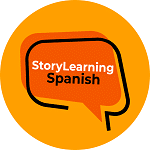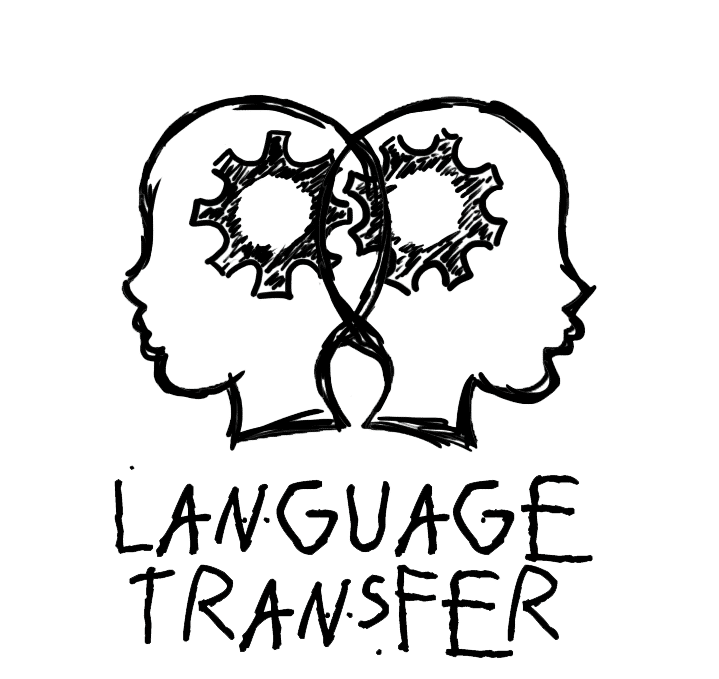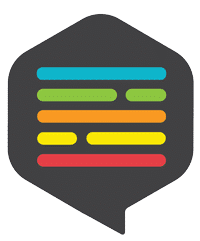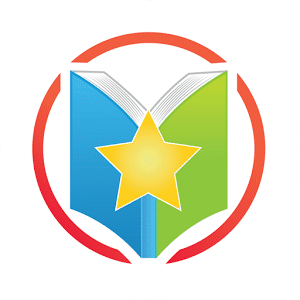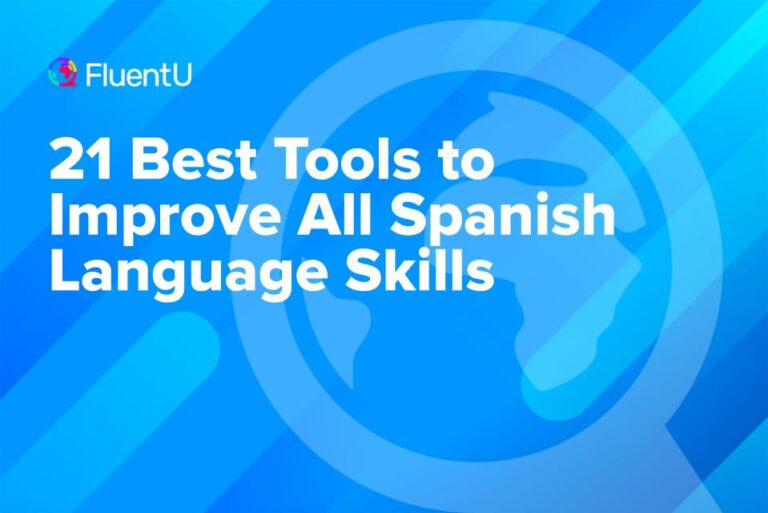Our 40 Favorite Spanish Audio Lessons
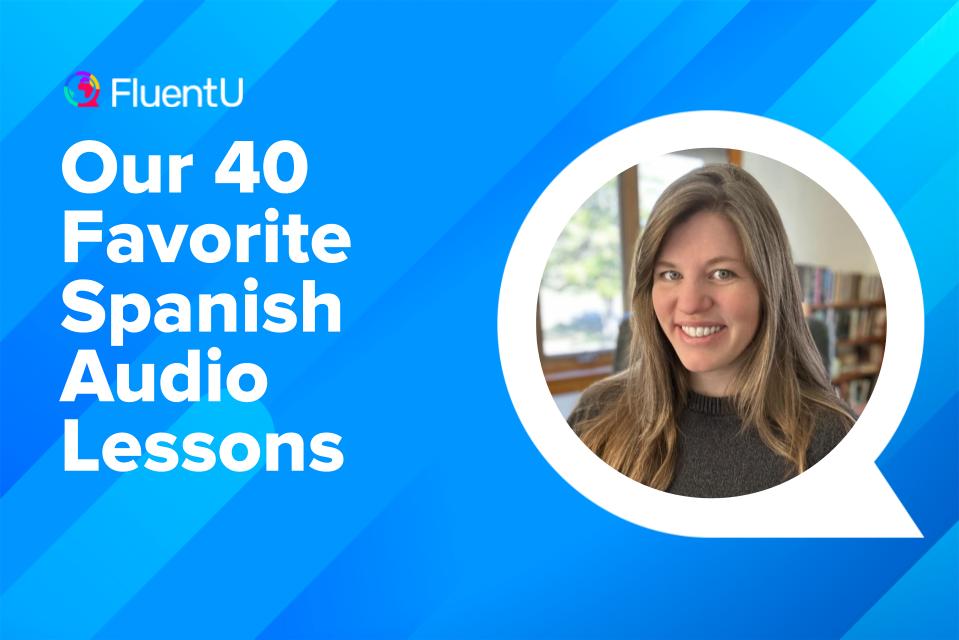
Audio was always my best Spanish learning tool, but I didn’t even realize it until long after becoming fluent in the language. Looking back, I can see exactly why learning Spanish with audio makes a huge difference to your fluency—and by the end of this post, you’ll understand the magical teaching powers of audio, too.
Below, you’ll get to know a whopping 40 audio resources for learning Spanish, most of them completely free (and all with free portions).
Download: This blog post is available as a convenient and portable PDF that you can take anywhere. Click here to get a copy. (Download)
Audio Lessons for Learning Spanish
1. Notes in Spanish
Notes in Spanish is designed for learners at different levels.
Starting with a beginner’s level that’s partly in English, partly in Spanish, and then progressing through podcasts for intermediate and advanced learners that are entirely in the language, these audios are designed to teach conversational Spanish through appropriately paced discussions.
The podcast’s hosts, Marina Diez and Ben Curtis, live in Madrid and have been creating audios for Spanish learners for many years.
In addition to the audio, the pair offers extra insights into Spanish vocabulary and usage on the Notes in Spanish blog. Complete transcripts of the free audios are available as a paid resource, bundled into packs of varying price points.
They’ve also got a YouTube channel with interesting tips and information, which you can check out below!
2. Coffee Break Spanish
Coffee Break Spanish podcasts offer relaxed audio and video lessons that run about 15 minutes each, perfect for your coffee break at work.
They’re suitable for newbies and more seasoned students, as you can choose from a variety of levels.
Lessons are available for free for a few weeks before they’re archived and become available only to subscribers, so visit this one often!
Click here to read our full review.
3. Stories by The Spanish Experiment
Thinking of expanding your Spanish horizons further with children’s stories? The Spanish Experiment can help you with that.
The Spanish Stories section has a collection of childhood favorites and original creations.
Beginners might start off with familiar fables like “Los Tres Cerditos (The Three Little Pigs),” while pre-intermediates might go for an original title like “El Pájaro y la Ballena (The Bird and the Whale).”
Each story is narrated by native speakers and is accompanied by text and beautiful illustrations. Every paragraph also comes with English translations.
Just note that some of their stories have moved over to The Fable Cottage, so you can head over there once you’re done with the list on The Spanish Experiment, or check out the YouTube channel below.
4. StoryLearning Spanish
If you can’t get enough of stories, StoryLearning Spanish is where it’s at. These stories are aimed at low-intermediate and intermediate learners.
The audio tracks are short and sweet, covering one chapter each so you never feel overwhelmed, and the audio links contain the full transcript that you can follow or read after the episode. There’s also a glossary for keywords!
They upload new tracks daily so you never have to wait long for the next chapter. Although you don’t really need to worry about running out, considering they have two seasons with over 300 episodes and counting.
5. Language Transfer
You’ve probably made it a habit to jot down notes when you come across a new word.
However, with Language Transfer, the instructor wants you to ditch your notebook and let your mind completely engage with his audio lessons. This way, you’re not only learning how to communicate, but how to think in Spanish as well.
There are 90 tracks for the Complete Spanish course, with the lessons under 10 minutes each. They’re almost like personal tutoring sessions, as each one features a student who responds to his questions. The pauses between questions and answers are there for you to participate in the discussion as well.
You can listen to the entire course on the website, SoundCloud or the app.
6. BBC
You’ve obviously heard of the BBC as a news organization, but did you know that they’ve got tons of tools dedicated to language learners?
There’s an entire section of their website devoted to Spanish learning tools—and Spanish audio tools in particular.
For total newbies, their video introductions to Spanish feature basic conversations and come complete with transcripts, worksheets and additional resources for in-depth reviews of the topics at hand.
What’s there are archived materials that are no longer updated—and some are now unavailable—but there’s still plenty of juicy audio to squeeze out of this site.
And from there, you can try listening to BBC Mundo broadcasts.
7. Michel Thomas
These are some of my favorite audio lessons as they teach you a language naturally and memorably. You listen to a teacher and two students as they learn Spanish from beginner to intermediate/advanced level. You’ll listen along to the highs and lows that two students go through while learning Spanish.
You’re able to repeat along with the students as you listen to their lessons. If you aren’t a beginner and want to start at a higher level, the lessons range in level.
They’re quite comprehensive and offer supplement courses to further expand your Spanish with. For example, if you complete the foundation lessons and want to hone in on your vocabulary skills, you can use the vocabulary builder course.
8. Spanish Obsessed
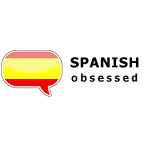
You can access tons of Spanish audio files (with typed-out transcripts and notes) for free by visiting their homepage and selecting your current level.
You can also find their audio resources on iTunes.
9. Foreign Service Institute Spanish Courses via Live Lingua
These lessons were originally designed to teach Spanish to government officials and diplomats in the 1960s.
Now, they’re available to all of us completely free thanks to the magic of public domain.
With this resource, you’ll be able to teach yourself excellent Spanish with PDFs accompanied by evenly-paced audio.
There are even audio courses created to acquaint you with the Spanish language and culture in different regions, as well as more professional courses for anyone interested in speaking just like an honest-to-goodness diplomat.
Audio Programs to Learn Spanish
10. Pimsleur
This audio program uses high-quality audio and accurate translations to teach you Spanish. It not only focuses on boosting your listening comprehension skills but takes it up a notch by having you repeat words and phrases as you listen.
Pimsleur trains you to quickly remember words, fine-tune your pronunciation of words, and more effectively use words during a conversation. This is a great program to use as a beginner or intermediate learner if you’re looking to focus on your listening and speaking skills.
This program also includes a transcript for each audio file so that you can read along and learn the correct spelling of each word as you listen.
Click here to read our full review.
11. FluentU
Other sites use scripted content. FluentU uses a natural approach that helps you ease into the Spanish language and culture over time. You’ll learn Spanish as it’s actually spoken by real people.
FluentU has a wide variety of videos topics, as you can see here:

FluentU brings native videos within reach with interactive transcripts. You can tap on any word to look it up instantly. Every definition has examples that have been written to help you understand how the word is used.
Plus, if you see an interesting word you don’t know, you can add it to a vocab list.

Review a complete interactive transcript under the Dialogue tab, and find words and phrases listed under Vocab.

Learn all the vocabulary in any video with FluentU’s robust learning engine. Swipe left or right to see more examples of the word you’re on.

The best part is that FluentU keeps track of the vocabulary that you’re learning, and gives you extra practice with difficult words. It'll even remind you when it’s time to review what you’ve learned. Every learner has a truly personalized experience, even if they’re studying with the same video.
Start using the FluentU website on your computer or tablet or, better yet, download the FluentU app from the iTunes or Google Play store. Click here to take advantage of our current sale! (Expires at the end of this month.)
12. edX
Massive Open Online Courses (MOOCs) are super handy for learning Spanish at the university level for cheap. Some course offerings even come for free, such as the ones listed on edX.
There are seven free Spanish courses on edX, with one even offering a professional certificate for those who need it for work.
Other than the beginner courses, there’s also a course for travel Spanish and Spanish for medical professionals. Although it’s not a Spanish language course, there’s one called “The Spain of Don Quixote,” which would be an excellent foray into Spanish literature.
13. Destinos
Although the curriculum is based on video lessons, I’ve included Destinos on this list because it also works as background audio.
These videos or episodes teach Spanish, telenovela style, so it’s definitely not your generic Spanish lessons. Soap operas are perfect for working on your accent, and with this resource, you get 52 episodes that are 30 minutes each.
If you’re a total beginner, I suggest that you actually watch these videos and go through the given exercises. But if you already have a good foundation in Spanish, you can leave it playing in the background to listen to the story and refine your pronunciation.
14. Colloquial Spanish
Originally derived from the book titled “Colloquial Spanish of Latin America: The Complete Course for Beginners,” Colloquial Spanish is an audio course that’s completely free to download.
It works for both self-study and classroom use.
To maximize your study, these audio files can be used in conjunction with the textbook. The two resources together will provide you with a well-rounded learning experience.
The audio files are good on their own, but do the exercises in the book if you want to put the lessons into practice. The book also contains grammar explanations, answer keys, English translations of dialogues and useful vocabulary lists.
15. Gritty Spanish
Gritty Spanish offers awesome audio that will engage you and help improve your Spanish skills. Gritty Spanish is well-reviewed and has a lot to offer.
Gritty Spanish’s audio is more emotive than many audio sources, which makes it more engaging. Additionally, Gritty Spanish uses speakers from a variety of backgrounds to expose you to a wide array of accents including Puerto Rican, Castilian, Mexican, Colombian and many more.
Dialogues feature a variety of topics and scenarios to teach you a wide array of words. Plus, each dialogue has an associated transcript so you can read along or study the text independently. You can download the MP3s of the dialogues to any device.
Click here to read our full review.
16. Spanish Listening
No matter what level you’re at, what accent you want to hear or which topic you want to cover, Spanish Listening pretty much has anything under the sun.
The website contains over 400 videos featuring various native Spanish speakers, talking about everything between local holidays and makeup routines.
The videos aren’t really used for visual aids, so you can definitely play them while you’re doing mindless tasks.
Each short lesson is also accompanied by a multiple-choice quiz and a vocab section. Plus, there’s an additional listening portion, where you have to type out the questions from the audio and answer them in the space provided.
Learn Spanish with Audiobooks
17. LibriVox
If you’re already on board the audiobook bandwagon, then you’ve probably visited the huge collection of public domain (that is, free!) audiobooks on LibriVox before.
You can quickly and easily browse all the available titles by language (click here to see what’s available in Spanish).
Click “Advanced Search” to sort by language (Spanish, naturally) and other key factors (like title, author, release date and so on).
They’re constantly upping their game and adding new titles by having international volunteers read and record texts in their native languages. Feel free to give them a hand with English or any other language you speak natively. It’s a great project!
18. Loyal Books
Loyal Books is very similar to LibriVox in mission, content and volunteerism.
They’re focused on amassing a giant collection of audiobooks from around the world with the help of eager volunteers.
Head over to the site to find a title that you can’t find on LibriVox, or to hear the same one read by a different native speaker (or with better audio quality).
And, for your convenience, there’s an app as well!
19. Universidad Interamericana para el Desarrollo
Translated as the Inter-American University for Development, this is an institute of higher learning in Mexico that prides itself on non-traditional methods of education and learning.
One nice program they have going is a student-led endeavor to record audiobooks. In particular, they’re focused on having native-speaking students record the classics in Spanish.
At any given time, you can find a collection of 10-20 complete Spanish audiobooks on their website. The selection occasionally changes when they’ve completed a new story.
From their site, they link you out to iTunes, where they’ve made the audiobooks available for free streaming or downloading in 20-minute chapters.
20. AlbaLearning
This expansive website for Spanish speakers and students offers a huge selection of audiolibros (audiobooks) and even videolibros (videobooks) where the text appears on-screen while the book is being read.
There’s a bunch of other useful stuff here apart from audio, all free to download, including:
- Complete e-books
- Textos paralelos (parallel texts, bilingual readers with text in English and Spanish side-by-side)
- Spanish news with transcripts and quizzes
- Free quizzes on vocabulary and book content
21. Amazon
Amazon has a reputation for making everything you could possibly want available at your fingertips, either to access online or have delivered straight to your home.
Spanish audio is definitely something it can deliver, too, thanks to these resources:
- Audible: For listening to a limitless supply of audiobooks
- Kindle: For reading e-books, but it also has some cool audio features that you’ll learn about if you keep reading
- Amazon Prime: Free delivery on many items, plus access to Kindle and Prime Streaming for movies, music and more excellent audio
Audible and Kindle are more interconnected than you might have known. You can use Whispersync and Immersion Reading to sync up your e-books and audiobooks.
Although Amazon resources, for the most part, aren’t free, you can enjoy a free Audible trial and find many free e-books on the Kindle store.
Learn Spanish with Podcasts
22. Lengalia
Would you like to learn more about the whole Spanish-speaking world?
You can do that while learning the Spanish language itself, thanks to Lenaglia.
This course offers 30-minute podcasts about Spain and the countries of Latin America—all in Spanish.
Like Audible, you can check out a free trial lesson to see if this format is right for you.
23. Spotify
Spotify is a cool blend of podcasts, language lessons and of course music.
To use this audio resource, you’ll need to create an account and download Spotify (either the program or app) to your device, but in my book, it’s well worth the memory space.
All you have to do is type “Learn Spanish” into the search bar to find all of Spotify’s Spanish language lesson playlists. There’s a lot of great stuff!
You can also listen to native podcasts completely in Spanish, some meant specifically for Spanish learners.
If you enjoy listening to music, you can browse “Genres & Moods” and click “Latino” to scroll through hundreds of Spotify’s Spanish-language music playlists. And as a huge aficionado of Spanish music myself, I’ve got to tell you, they really know their stuff.
Click here to read our full post on learning Spanish with Spotify.
24. iVoox
This Spanish audio hosting website has it all: podcasts, audiobooks and live online radio streaming.
It’s a platform that helps Spanish-speaking podcasters monetize their work, which means it’ll get you farther than the most well-known shows for one simple fact:
There are more voices to discover here!
Not only can you listen online, but you can also listen with the app for iOS and Android, all of which are free to install and use.
25. Ecos del Balón
Can’t get enough of fútbol (soccer)?
Love the feeling you get when you hear a Spanish-speaking soccer commentator shout “gooooooooooooooooool” for one solid minute?
Soccer addicts and sports fans of all breeds will enjoy the Ecos del Balón podcast, where—as the podcast’s tagline says—the ball is the protagonist.
26. Escuchando Documentales

This is a nice listen when you’d like to learn something new, or at least to learn a new perspective on it.
Its little brother, “Escuchando Películas” is a less educational listening experience, because you’re just listening to the dialogue of a popular movie. But having long-form podcasts that run more than an hour can only be good for your Spanish listening skills.
Plus, it’s like experiencing the grand old days of radio drama programs that would describe scenes to you so you could envision them, which is kind of neat in its own unique way.
Best of all, both are completely free!
27. HistoCast
Every other Monday, the friendly and intelligent hosts banter their way through all sorts of history topics, from wars and revolutions to famous figures and discoveries.
They mainly focus on wars and battles, victories and losses that shaped history and skip around through events from ancient times to the modern day.
28. SBS Podcasts
The Spanish version of the podcast gets its coverage from a combination of sources all over Latin America, meaning you’ll get an interesting mix of news stories here.
29. Españolistos
If you’re struggling to understand native Spanish podcasts, Españolistos (Spanish Ready) is a great stepping stone.
Made for intermediate to advanced learners, Españolistos is hosted by Colombian Spanish teacher Andrea and the fluent Spanish-speaking American, Nate.
The 30-minute episodes are mostly in Spanish, and every now and then, Andrea corrects Nate’s pronunciation, which is quite encouraging to hear a fluent speaker continuously learning and improving.
The topic of conversation varies from episode to episode, sometimes discussing pop culture or current events, and other times specific vocabulary and grammar.
Either way, the topics are always relevant to everyday living.
Learn Spanish with News and Talk Radio
30. CNN Español

In Spanish, of course.
This is an excellent broadcast to listen to if you’d like to get all of your daily American and world news delivered in Spanish clear as day.
31. Radio Columbia

This radio station is based in San Jose, Costa Rica.
You’ll mainly find national Costa Rican news and stories from Latin America at large, along with some world news, sports and entertainment mixed in.
Whenever I happen to put this channel on, I’ve noticed that the hosts usually talk relatively slowly and calmly, which is ideal for language learners. Though I can’t promise you won’t catch a more exuberant host when you tune in.
32. Voice of America Noticias

They deliver information in a wide variety of formats, from written publications to radio and video.
Their mission is to deliver the facts and nothing but the facts, but you should listen and be the judge of that!
I’ve found it to be nice and dry, as news ought to be.
The Spanish version of the channel has a live stream of radio news constantly running, and it’s crystal clear. Start your days with “Buenos Días América (Good Morning, America)” to get fresh, daily news about the United States and Latin America.
33. RFI
Despite being labeled as Radio France Internationale, this news broadcast is offered in an impressive 15 languages.
Change the language by going to its Languages page from the home screen of the site.
While all the spoken topics will be fully translated into European Spanish for your listening enjoyment, keep in mind that any music played between programs is often still French.
In fact, the Spanish version itself is recorded and delivered from Paris, France.
This is wonderful for Europhiles and polyglots who are also learning French, but could be a downside for language learners who want full Spanish immersion during their listening time.
34. Radio Ambulante

Besides the stories themselves, what’s awesome about Radio Ambulante is the showcase of different Spanish accents and variations.
And you’ll never run out of things to learn about Latin America, both in terms of language and culture.
After it blew up as a popular listening source for language learners, the Radio Ambulante founders released Lupa. The app contains all the same stories you’d hear on the original podcast, built with advanced tech learning tools to get the most out of these Latin American stories.
35. News in Slow Spanish
 If you have a hard time following along with Spanish news, News in Slow Spanish will keep you in the loop, all while making sure you actually understand what’s going on.
If you have a hard time following along with Spanish news, News in Slow Spanish will keep you in the loop, all while making sure you actually understand what’s going on.
The audios offer slow playback. There’s also an option to speed up the track when you’re up for a challenge.
In addition to news, this resource also contains audio courses and series, so you can learn according to a specific theme or take the conventional Spanish learning route.
For a full learning experience, you might want to consider paying for a membership. Members get access to transcripts, downloadable PDFs, flashcards and pronunciation practice.
Music for Learning Spanish
36. IMER Mexico
The Instituto Mexicano de la Radio (Mexican Institute of Radio) is a unique and interesting place to visit for news, music and even podcast-style discussions of historical and modern topics.
This cool resource states that public radio is critical for public well-being—and not just in general, but radio that’s dedicated to providing ample coverage and diversity of content.
Meander through the different programs on offer or go straight to the audio gold—they’ve got a huge spread of Mexican radio stations available to listen to directly on their site, each with a quick note about their main genre of music.
37. TuneIn

You can search for topics in Spanish and Spanish-speaking artists to follow their music.
But another clever way to use this audio platform is to click “By Location” in the top bar of their site.
Click “North America” for Mexican and Caribbean audio broadcasts, “South America” or “Central America” to hear broadcasts from every country down south and “Europe” to find audio from Spain.
Many of these channels are your everyday music stations, and having TuneIn running in the background while working, studying or cleaning the house has become a favorite pastime of mine.
You’ll get exposed to so much music from around the world here—choose a radio station from a different Spanish-speaking country every day of the week!
38. NPR
Once in a while, NPR hosts may feature or chat about Spanish-language musical artists. But if you really want to dig into their treasure trove of music, you need to visit the Alt.Latino section.
From there, you can check out their past segments or play the old radio broadcast.
By doing so, you’ll be exposed to a massive spread of Spanish music, from traditional sounds to more modern and off-the-wall tunes.
It’s a little bit hit or miss for language learners, as you’ll also sometimes end up listening to Hispanic artists who sing in English and Spanglish, but if you’re going to have the radio on all day long, you’re bound to find plenty of awesome hits completely in Español.
The best feature they offer is a constantly updated display that shows the artist’s name and song title.
39. Pandora

The special feature that makes Pandora popular is that it creates playlists for you based on the song titles and artist names that you input.
Enter the name of a Spanish-language artist you adore, or your absolute favorite salsa or reggaeton jam, and Pandora will conjure up a mix of music that’s in line with that particular choice.
For example, type in “Marc Anthony” and hit “start station,” and you’ll go on a journey through classic salsa.
It’s the perfect way to find even more of what you already love!
40. YouTube
Yes, I know that you know YouTube exists, and you probably also know that it’s loaded with music from around the world.
Start by searching for specific styles of Spanish music until you find a high-quality playlist.
For example, you might search for: merengue, salsa, bachata, cumbia/kumbia, reggaeton, boleros, rock Latino, reggae Latino or pop Latino.
Why Learn Spanish with Audio?
Improve Spanish conversational skills faster. If audio is your primary Spanish learning tool, you’ll naturally pick up on conversational Spanish faster (compared to learning with a textbook or flashcards app). You’ll learn how people speak with each other on a variety of topics and in a variety of ways—this helps you practice listening, and will eventually translate into your own conversational speaking skills.
Increase familiarity with the sounds of Spanish. It’s true what they say: you need to develop an ear for Spanish. So much of communication is dependent on sound, rhythm and tone. You’ll sound more like a native speaker if you’ve heard how the language sounds from the mouths of the natives themselves. It’s not something you can pick up with a textbook alone.
Tons are available for free or cheap! Audio is abundant, flowing forth from the internet as if it were an eternal spring. Waxing poetic, but it’s the truth. Anyone can record a song or a language lesson and upload it on YouTube. Anyone can record a podcast and distribute it online. The internet is still a pretty free and untamed place, and anyone can have their say—and you can harness that for language learning.
Tips on How to Learn Spanish with Audio
Spanish audio isn’t actually magic, but there are some methods you can use to improve your Spanish with audio really effectively. Here are a few you can try:
Leave it on in the background while doing other tasks
Audio is easily the most unobtrusive and unobjectionable way to start practicing any language.
You can just put it on in the background while you cook dinner, take a shower, wash the dishes or drive around town.
You can leave it on for hours while working or studying and hardly notice that it’s there. Then, no matter what, you’ve at least squeezed some amount of Spanish exposure into your day.
Odds are, if you’ve spent some time listening to Spanish audio, you’ve learned or practiced something—and all that fun audio will motivate you to study more that day!
Zone in, zone out
To really learn from audio, you can’t just have it on in the background all the time, though. You actually need to pay attention once in a while.
Go ahead and zone out while doing other activities. But make sure you zone back in. Every 15 minutes or so, switch your mental focus and pay careful attention to the words being spoken or sung.
Do you understand the gist of the message? The entire message? What words don’t you understand? Look those up with Spanish dictionaries if you can. Then go ahead and zone back out, focusing on whatever else you were doing.
Don’t overwhelm yourself!
The zone in, zone out method really helps you avoid burnout. You’ll also want to ensure that you’re choosing audio that’s not completely over your head. For spoken word, be sure you’re choosing appropriate audio materials that suit your current skill level.
If you’re a beginner, pick a native Spanish podcast for beginners or audio made for young children. When you devote your attention to the audio, you’ll find words and phrases that are great to learn at your level, and you won’t feel totally overwhelmed.
Pair audio with video
Just as it’s helpful to zone in and out of listening, it’s also useful to see what you’re hearing. Pairing audio with video—especially well-captioned video—allows you to match the Spanish you’re hearing to its written form.
That way, you’ll be able to recognize the words you learn when you see them in a text, which will make reading in Spanish easier. You’ll also be able to pronounce them correctly when you read aloud.
Another advantage to improving your listening comprehension with Spanish videos is that you can use visual clues, such as the speakers’ facial expressions and body language, to help you understand the context and meaning behind what they’re saying.
Keep a dedicated Spanish notebook
Don’t scribble notes down on any old notebook or sticky note. The fastest way to forget your Spanish lessons is to lose your notes. Looking back on them will do wonders for practice and recall.
Buy a cheap notebook—or a fancy Moleskine, if you must—and make it your designated Spanish notebook. Resist the temptation to use it for other notes and grocery lists, unless you’re going to write those in Spanish too!
Print complementary texts to read along
Plenty of Spanish audio materials come with transcripts. If possible, read these while you listen!
Trust me: listening becomes easier, reading becomes easier. Print out the transcripts, and note-taking becomes easier too.
Mix and match
Audio isn’t one simple thing—there are many diverse types of audio you can learn with, as you’ll see in this post.
Even if you fall head over heels for one type of Spanish audio (news, music, podcasts) be sure to shake things up and rotate what you’re listening to.
This helps you avoid getting bored of your favorite stuff. Mixing it up also helps you discover awesome new audio and get exposed to a wide range of Spanish.
Pump up those Spanish tunes, and dance and sing like nobody’s watching… or listening. Start the day in a brainier way by swapping your current news for a broadcast en español. Drill your way through Spanish conversational phrases while driving around in your car.
Enjoy these free audio resources however you want!
The more you learn with Spanish audio, the closer you’ll be to full Spanish fluency.



